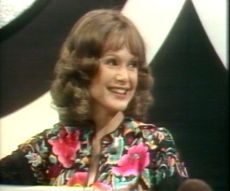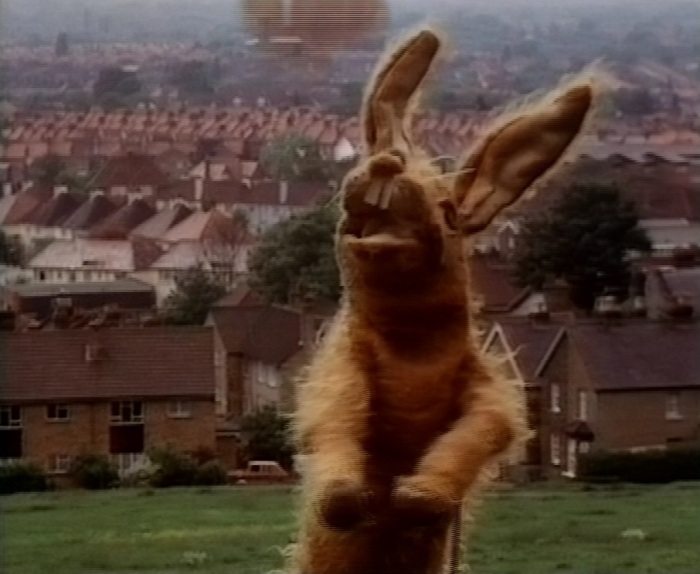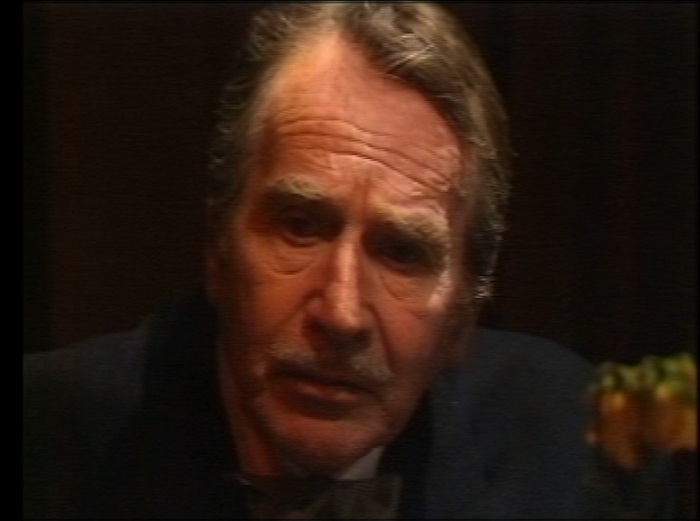
The third of the Kaleidoscope releases out this week, Frankie Howerd – The Lost Television Pilots offers easily the best value, both in terms of running time and content.
First up is episode three of Up The Convicts (although since it was the first to be recorded it does sort of qualify as a pilot). Up The Convicts was a short-lived (four episodes) series made for the Seven Network in Australia. Howerd is Jeremiah Shirk, a convict transported to a penal colony in New South Wales and put to work as the servant for a wealthy couple. Essentially Up Pompeii in different clothes, it’s a typically raucous fifty minutes of Howerd at full throttle.
The script might be corny, but Howerd was a past-master at spinning gold out of the thinnest material. His trademark style – pausing to berate the audience, either for not getting the joke or for reading dirty innuendoes into his innocent words – is present and correct and he seems to enjoy bouncing off the cast (Frank Thring is especially good value and it’s nice to see Wallas Eaton pop up as well).

The plot of the episode is pretty thin. His thoughtful mistress arranges a marriage for him, but Jeremiah doesn’t (as he hopes) get to grips with a beautiful serving wench, instead he’s presented with a nightmare vision of a plump woman who never stops eating. But the story isn’t really important – when Howerd’s on, he’s on.
Although all four episodes are reported to exist, only episode three is included in this release – which is a shame, as based on this example I wouldn’t be averse to seeing the rest. Apart from a few brief seconds of tape damage, the videotape is in pretty good shape.
1976 was a busy year for Frankie. Apart from Up The Convicts in Australia, he was also to be found in Canada, where he made The Frankie Howerd Show. Another short-lived series, this DVD contains the pilot and first episode, which you have to assume are the only survivors from the thirteen made.
Frankie is a British ex-pat living in a run-down Toronto boarding house overseen by landlady Mrs. Otterby (Ruth Springford) and her son (Gary Files). Other residents include Wally Wheeler (Jack Duffy), a surly man with a shady past, and Denise (Peggy Mahon), an attractive young woman who inevitably catches Frankie’s eye.

The series finds Frankie in typical form, bursting through the fourth wall at regular intervals – either to once again berate the dirty-minded audience for seeing innuendos where (he believes) there are none or to apologise for the poor performances of his fellow cast members. Nobody could work an audience like Frankie – had he played a sitcom in the traditional way (ignoring the audience) then the results wouldn’t have been half as interesting.
Mind you, it’s very much a series of its time. The pilot features several Indian stereotypes of an incredibly broad nature (one cast member browns up as Mr Singh, an employment exchange worker who attempts to find Frankie a job). It’s a breathtaking (for all the wrong reasons) performance, but it’s hardly unique from television of this era. As with Up The Convicts, if you like Frankie then you’ll like this – predictable it might be, but Frankie’s never less than a delight.
Although The Gong Show was a popular American format, there was never a hit British version – despite two seperate attempts to launch a series, both with Frankie as the host. The second pilot, made by Channel 4 in 1985, was transmitted to little acclaim – whilst the first (included on this disc) was produced by Southern in 1977 and appears not to have made it to air.

Barry Cryer, who worked on the programme, noted in his autobiography Butterfly Brain that it didn’t really play to Frankie’s strengths. But whilst Frankie does occasionally feel a little adrift as the host, he’s always good value when interacting with the diverse range of performers. Frankie’s also in his element when crossing swords with the three panellists – Madeline Smith, Russell Harty and Diana Dors (especially Harty, who seems to relish being mean to some of the contestants). And with Caroline Munro as a hostess and Bella Emberg as the stone-faced scorer, you can’t say that the show lacked star quality.
As always with The Gong Show, there’s an incredible grab-bag of performers. From an elderly lady (decked out with a glittering union jack hat) singing God Save The Queen (she was quickly gonged off by all three) to a young eighteen-year old lad tackling Sweet Caroline very credibly via a middle-aged singing muscle-man you can’t deny that there’s something for virtually everyone (and that’s only scratching the surface – I won’t spoil the surprise of some of the odder acts).
This is an enjoyable curio which – had the fates been different – could easily have run to a series. Although it appears to be sourced from VHS, the picture quality is more than watchable.
The set is rounded out by three interviews (listed as special features). All were recorded at the same time – around 1978 – when Howerd was in America plugging his appearance in the Bee Gees’ ill-fated film version of Sergeant Pepper’s Lonely Hearts Club Hand. The first – with Merv Griffin – runs for 10″32′ whilst the second – with Mike Douglas – runs for 8″06′.
The most substantial is Ryan’s Roost (27″50′). This one looks to be sourced from VHS and is in black and white, which might be the reason why it was relegated to special feature status. All three have moments of interest, although Howerd – without a British audience to play off – does at times appear to be a little diminished.
Any admirer of Frankie Howerd will find plenty to enjoy across these two discs. Highly recommended.
Frankie Howerd – The Lost Television Pilots is available now. It can be ordered from Simply here (quoting ARCHIVE10 will apply a 10% discount).














